Matador Network's Blog, page 111
October 14, 2024
Bikepacking Lake Tahoe to Mammoth Lakes Showcases the Sierra Nevada’s Best Small Towns

The East side of the Sierra Nevada is most often considered as the host to distinct destinations along Highway 395: the 14,505-foot Mt. Whitney towering above the town of Lone Pine, Bishop for its rock climbing, Mammoth Mountain for skiing, and maybe even Bridgeport if you’re a fan of summertime rodeo or hot springs. All too often, the 395 is considered a prettier detour alternative to Highway 5, providing a more scenic vista out of the windshield on the way from Los Angeles to Lake Tahoe. The miles inbetween resorts or trailheads for outdoor recreation are simply sped by at 65 miles per hour. It is exactly this fast-paced place hopping that makes the Eastern Sierra one of the last best places in the western United States for finding solitude, nature, and community just off the asphalt. As a local to Lake Tahoe, this is where I escape from the summer and autumn crowds to find groves of orange aspens, clean flowing creeks, and wonders of nature and history, all without a soul in sight, allowing for a slowing down of the pace of life, right in tune with the seasonal change towards winter.
Finding a few days away from the Lake Basin alongside my partner, Kenzie, and pups meant planning a trip that could simultaneously include mountain biking, hiking, dog-friendly camping, and the opportunity to experience local communities along the way. In the end, we landed on my personal favorite form of travel – the credit card bikepack. Beginning in South Lake Tahoe, I’d ride my way along interconnecting single track and old dirt roads, loaded down by little aside from the water and snacks I’d need for each 30-to-50-mile segment, as well as a radio for communicating with home base – our Subaru Outback loaded with the rest of the family who would go for hikes at my end destinations until I caught up.

The route the author biked from north to south, beginning near Lake Tahoe and ending in Mammoth Lakes. Map courtesy Dillon Osleger
Each segment of bike touring from Tahoe to Mammoth was planned according to my primary interests and obsessions in life: geology and history, with specific attention afforded to experiencing autumns changing hues across the Sierra, not to mention intersecting with a few of my favorite local haunts. While I savored the solitude found out on the “East Side,” I couldn’t help but see the joy in the eyes of local shop owners and waitresses as I rolled up on my mountain bike and support their economy through the purchase of baked goods, coffees, homemade beef jerky, or my 3rd hamburger of the day. If encouraging a slower version of tourism found in bikepacking can bring economic opportunity to these small towns, I can certainly bear to share a few lines across maps and landscapes that have taken some time and experimentation to put together. This was my route along what promised to be an incredible and unique journey from Tahoe to Mammoth, testing the course for an interconnected trail network bridging the two regions.
South Lake Tahoe to the 395
The view from Leviathan Peak. Photo: Remo Nonaz/Shutterstock
Beginning at the lake shore, I rode my Specialized Epic Evo up the Armstrong Trail outside South Lake Tahoe towards the eastern crest of the Sierra Nevada Mountains. Linking together a series of alpine single track including Horse Meadows Trail across Carson Pass led to old dirt roads in Hope Valley first used by the 1884 John C. Fremont expedition across California, all of which set up a 3,000-foot descent down granite slabs and rarely traveled deep soil between aspen groves towards Grover Hot Springs State Park and the town of Markleeville. A short stop at the general store, which provides a microwave for frozen burritos bought on sight, as well as a fresh natural spring across the street, made for a welcome respite. From town, the Carson River sits just over the road’s edge as the grade of climbing inches ever skyward. Long stretches of six percent grade allow for a slow winch up and over Monitor Pass, where sagebrush covered hills break off into views over the great plains of Nevada.

Double track en route. Photo: Dillon Osleger
Down dirt double track alongside the last stretch of Highway 89 from Leviathan Peak, a split off into Slinkard/Little Antelope Wildlife Area allows for an avoidance of Highway 395, providing a remote and scenic entrance into the lonely outpost of Walker. At the far edge of town a stop at Walker Burger is obligatory, settling stomachs for a night spent in the next town over – Bridgeport. Finding ourselves trapped between the western views of jagged Eastern Sierra peaks cast under setting sunlight and Easterly foothills blanketed in alpenglow, it took a fair amount of willpower not to book an extra night in this small hamlet known for hot springs, backcountry skiing, fly fishing, and cattle ranching.
The East Side – Bridgeport to Mammoth
June Lake. Photo: Patricia Elaine Thomas/Shutterstock
Much of the trip’s elevation had come and gone with the descent off of the Sierra towards the Great Basin, but thankfully a gentle decline in topography along with copious historical context, geologic wonder, and enviable local bakeries remained along the latter half of this route. Wrapping around the moderate slopes east of Bridgeport, dirt roads originally hewn by oxen train lead to old mines, namely those of Bodie – the epicenter of gold extraction in the early 1800s – which now stands as a state historic park preserving the since abandoned township. Passing through places and times forgotten to the south, around the dry shore of Mono Lake and into Lee Vining offered reprieve in wild fruit trees, something the entirety of the Eastern Sierra was once known for before the draining of its waterways for the expansion of Los Angeles.

The bike setup. Photo: Dillon Osleger
As if to cement this legacy shift in landscape and economic fortunes, the beginning of LA’s aqueduct is found along dirt paths just south of town, bordering the roadway up and into Yosemite National Park. Riding along the creeks and canals that initiate the headwaters of this hydrologic project presents a positive note in pre-established right of ways through property of any ownership. It is this system of gravel roads and single-track trail that wind through June Lake, around the obsidian domes, volcanic post piles, and craters of historic landmarks, and into the resort town of Mammoth Lakes. A last stretch of parallel bike path or trail (pick whichever suits your fancy or fatigue at this point) lands tires at the village center, where time of day can determine next steps post bike packing: coffee, burritos, a stiff whisky or a dip in the river, to celebrate the end of this epic ride. 
October 12, 2024
For $100K, This Company Will Spy on You — Then Use the Info to Plan a Custom Vacay

Over-the-top and custom safari vacations are nothing new, but one company is stepping up its game with a new, and likely one-of-a-kind, offering. Go2Africa just announced what it calls “the world’s most curated honeymoon,” offering a custom 11-day trip through East and/or Southern Africa.
But depending on how private you are as a person, there may be another appropriate superlative for the trip: “the world’s creepiest honeymoon” — or at least the most unusually planned. Because the package includes not just a high-end, bespoke safari trip — but also a private investigator, or PI, who will “shadow the couple for an entire week,” using the information they learn to plan a personalized vacation.
Of course, the PI isn’t there to make couples look over their shoulders for a week. Rather, his role is to gather personal insights about the couple in order to create an extremely tailored and personalized trip. The information learned via tactics like studying social media profiles, following couples in their day-to-day lives, and even interviewing family and friends, will guide every part of their African getaway, from what countries they’ll visit to what types of animals they’ll try to find on game drives.
View this post on InstagramA post shared by Go2Africa (@go2africa)
The idea behind the heavily-researched vacation offering is to take the planning step off the couple’s plate, especially for deep-pocketed duos who want and appreciate an extremely bespoke experience, but don’t have the time to arrange it themselves. And given the cost (up to $105,000 per couple), many of the buyers may already be high-net-worth individuals who are used to having assistants know and manage their personal likes and preferences. For couples like that, hiring a private investigator may not seem that odd.
“We’re definitely seeing tailor-made travel becoming more sought-after,” says Emma Hill, a trip planner and African safari expert at Go2Africa. But she says the company knows planning big trips can be stressful for couples as “there are too many options and they are not sure which direction to go in.”
Go2Africa gave several examples of extremely personalized details couples may encounter during their PI-planned safari vacations, such as:
Finding a book from your Amazon reading list next to the bed in your lodgeEnjoying a recreation of the first meal you ever had together as a couple al fresco under the starsListening to custom playlists of your shared favorite songs during game drivesTraveling couples have to agree to a few stipulations before trip planning can begin. They have to agree not only to have the PI follow them, granting access to whatever the PI may request, but also must agree to spend up to $105,000 for the experience. The couple won’t know where they’re headed until they arrive, though they’ll be told what airports to use and given a detailed packing list in advance. They can also tell Go2Africa when they book if they have any strong aversions to particular destinations or activities, though theoretically, the FBI-trained private investigator’s work should ensure against any experiences they wouldn’t like. Because the private investigator will travel to the couple’s location, they need to live in either the US, UK, Canada, or Australia.

PI-planned safari trips will include all experiences, such as game drives. Photo: Go2Africa/Lion Sands Ivory Lodge
“The Designer Honeymoon,” as it’s called, includes only five-star experiences and accommodations, so couples should plan on spending no less than $45,000 per person. That includes everything except international flights, such as hotels, experiences and activities, food and drink, and travel within Africa. In addition to plenty of game drives, some of the luxurious offerings that could be included on the itinerary include cliffside villas with private pools at Anantara Maia in the Seychelles, sleeping under the stars in a lofted treehouse while animals wander below you at Lion Sands Tinga Lodge in Sabi Sands Nature Reserve in Kruger National Park, or a horseback safari for experienced equestrians at Singita Faru Faru River Lodge, where you may see zebras and wildebeest migrating through the Serengeti. 
October 11, 2024
DJI Osmo Action 4 Review: A Lot of Tech in a Little Camera

I have, for lack of a better description, come of age during the photographic rise of the small action camera. I had the original digital GoPro (the first was actually a film camera with a wrist strap) and have watched the wild and meteoric rise of the small digital sensor action cameras.
At the same time I was also an early adaptor to the drone movement and have watched the technology and accesability that DJI drones have given us filmmakers as the technology has advanced over the years. What used to take thousands of dollars and a wild amount of preproduction to get aerial imagery is now all of the sudden at our fingertips. Those early days, though, saw us strapping early versions of a GoPro to the bottom of a DJI drone.
We would hit record on the GoPro, fire up the drone and off we went. Flying blind it would often times become disorienting trying to figure out what way the drone was headed. You’d be looking at your timer trying to guess how much time you had left on the drone battery before it would simply fall out of the sky. A 10-minute flight was about the max and the excitement would be high when the drone miraculously returned home. Upon landing, we’d stop the GoPro and run to download the data and excitedly look at the wobbly and often times unusable footage, but what a time it was. Aerial filmmaking at your fingertips!
That was about the time that my DJI and GoPro worlds separated. GoPro continued to hone in on the action sports camera world while DJI took off with the drones and continued to work on the advancements of its various camera sensors, etc. I recently acquired a DJI Osmo Action 4 camera ($299 at Amazon), and it’s leveled up my game.

A shot captured with this contrast, angle, and detail could only happen on a cation camera – and only on the DJI Osmo Action 4. Photo: Scott Sporleder
We hope you love the DJI Osmo Action 4! Just so you know, Matador may collect a small commission from the links on this page if you decide to make a purchase.
First impressions of the DJI Osmo Action 4This led to the development of the DJI Osmo Action 4, the recent iteration of DJI’s continuing evolution in the camera world. I recently had the opportunity to take one of these mighty little cameras with me on an adventure to Dubai. This is a fierce little camera that packs quite a punch.
Right out of the gates there are a lot of similarities with a GoPro, it’s physical size and shape, the button setup, as well as the functionality.
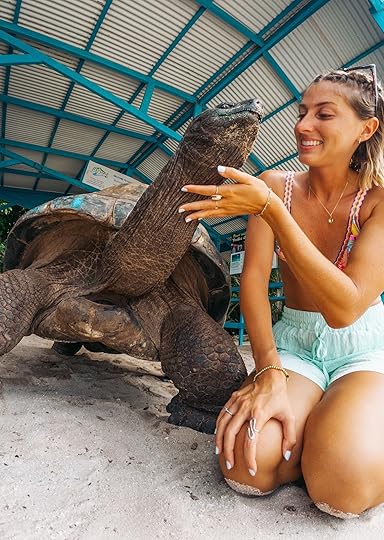
Crisp detail and vivid colors stand out with the DJI Osmo Action 4. Photo: Scott Sporleder
The differences come as you dig in and get used to the different interface. Within a few times using it one can get acclimated quickly to the features of the Action 4. For me, the thing that stood out is the quality of the videos and images that the Action is able to capture. Building on what is certainly some great technological leaps in sensor development, the Action 4 produces a superior image to that of the GoPro, from the baseline colors of a standard image to smoothness of the vidoes.
Check out the difference in contrast in the two images in this scroll gallery:
 The difference in colors between this image and the next shows the versatility of the camera. Photo: Scott Sporleder
The difference in colors between this image and the next shows the versatility of the camera. Photo: Scott Sporleder The Burj Khalifa looks equally intimidating, however. Photo: Scott Sporleder
The Burj Khalifa looks equally intimidating, however. Photo: Scott SporlederIt’s been a fun journey witnessing the advancements of cameras over the last decade and the addition of DJI making small, robust action cameras is, in my opinion, welcomed in what can only make the tools for us filmmakers better.
More like thisTechnology + GearLooking for a Travel Camera? The Sony A7 IV Is Worth the $2,500 Price TagThis Overlanding Shower Revolutionized My Desert Camp Setup

I am just going to come out and say it, having a hot shower out in the desert while camping is an absolute cheat code. I feel as calling something indescribable is often overstated and overused in the modern day social media era, however, I am going to state just that, a hot shower at the end of a day spent hiking, exploring and adventuring is indescribable.
I’ve spent years exploring the deserts of Southern California, most often around the high desert region of Joshua Tree. As the Creative Director at Matador Network, I’ve been blessed with opportunities to photograph and film many of our world’s natural wonders. Calling Southern California home, I’ve often missed the excitement of far off lands, which has left me wondering deeper and deeper into the California desert while at home. And when I do so, it’s often times long and dusty. Love a long a hike through Joshua trees, looking for unique angles of those alien like succulents (they aren’t in fact trees but cacti) but it’s the times crawling back into my tent dirty, exhausted, and a bit beat that have always been the taxing part.

Staying fresh in the desert. Photo: Scott Sporleder
Enter the Joolca HOTTAP Nomad kit, $549 at Backcountry.com. I’ve never been a massive gear guy, for one reason or another I’ve always just grinded through things, but recently I thought to myself, you know I don’t need to suffer every time I head out into the hills. After some research, I came across the Nomad kid and decided to give it a go and one thing is certain, I ain’t going back.
The HOTTAP is a self-contained shower that can also double as a sink and portable washing station for all of your dishes while on the road. It comes in a blue waterproof bin that is comparable to that of a storage bin you would use in your garage, and inside of it is everything you need (other than the propane to heat the shower).
We hope you love the Joolca HOTTAP Nomad kit! Just so you know, Matador may collect a small commission from the links on this page if you decide to make a purchase.
Pros of the Joolca HOTTAP Nomad kit
Easily control the temperature like you would in a normal shower. Photo: Scott Sporleder
• To pull up to a remote campsite, offgrid location and be able to end the day with a quick hot shower doesn’t feel real. If you have the space and like a small creature comfort than you can’t go wrong with this.
• It’s extremely self explanatory, hoses are intuitive to connect and within a few minutes you can be up and running.
• The self contained packing unit makes things extremely easy to pack and travel with.
Cons of the Joolca HOTTAP Nomad kit
Photo: Scott Sporleder
• The hoses can take a few times to get used to, what plugs into to what and making sure the everything is clipped in and engaged. However, after about the third or fourth time using it, you’ll get the hang of it.
• The temperature gauge/handle is very sensitive. Personally, I’ve found that the lightest increase in temperature can send this thing into through the roof heat wise. I almost always use it close to the lowest setting, so be careful when first turning it on that you start it low and work your way up.
• At times it can be a little tricky getting the right about water pressure going to keep the pilot light engages and heat on (as I’ve been running the off-grid plumbing setting, with the intake house out of a bucket and the battery pack used to run the pump) and you need atleast 1gallon a minute to activate the burners.
Again, same as the wiring, it becomes easy after a few times using it. 
This Is the One Piece of Tech I Wish I Had When I Was a Digital Nomad

I left my country of birth for almost fifteen years. From Sydney, Australia to New York and on to Santiago, Chile, I lived as a digital nomad. Reflecting on this time, I can think of tech that would have made my life so much easier: An iPhone 16, AI language apps, GuideGeek to help me navigate new cities, and a VPN so I could stream The Great British Bake Off and work more efficiently and securely when outside the US, would have been great.
Recently, I got ExpressVPN because now I’m back in Scotland, I need easy access to US-based content to streamline my location independent working day (and binge Hulu when I’m done.) After decades of not having this tech, I’m kicking myself that I didn’t do this sooner because ExpressVPN would have been a godsend, especially during my five years in South America, where I often worked in cafes on unsecured networks. Here are some of the ways this nifty VPN can make life for a digital nomad more enjoyable and safer.
What is ExpressVPN?ExpressVPN is a virtual private network (VPN) service that allows you to securely connect to the Internet from anywhere in the world. Like other VPNs, it encrypts internet traffic, making it tricky for hackers or other third parties to intercept or monitor data. It also hides your IP address, making it difficult for websites or other online services to track your location. And with this, you can access geo-restricted content from streaming services like Netflix and Hulu or those pesky sites that geoblock due to economic sanctions or shipping restrictions.
Here are some of the key features of ExpressVPN (without too much jargon)I’m one of those nearing middle-aged individuals who refers to TikTok as “The TikTok thing,” so I’ll keep this pretty simple.
Strong encryptionThis VPN uses AES-256 encryption, which is considered one of the strongest encryption algorithms available. The site says this is the same encryption standard used by the US government and security experts around the world. This will protect your online activities from outside hackers and government surveillance, which is important when living or traveling to countries with questionable internet privacy practices.
No logs policyExpressVPN does not keep logs of IP addresses or activities, meaning it cannot share information with third parties. This prevents anyone, including the company itself, from tracking your online activities or identifying your location.
Large server networkOne of the most valuable features of this tool is its extensive server network. It offers a wide range of options for connecting to the Internet from pretty much anywhere in the world. There are thousands of servers in 105 countries.
Kill switchThe kill switch feature automatically disconnects you from the internet if the VPN connection drops, which again helps to protect your privacy and keep you on track.
Split tunnelingThe split tunneling feature allows you to choose which apps and websites to route through the VPN and which you want to route directly. This flexibility is fantastic and so simple to use — even for me. You can configure split tunneling within the ExpressVPN app. It’s awesome if you’re using a VPN for privacy but also want to access locally hosted content or services.
Media streamerThe media streamer feature allows you to unblock geo-restricted content from streaming services such as Netflix regional libraries, Hulu, and Amazon Prime Video. If you’re learning a new language or feeling rusty, accessing Netflix in various countries is neat, as you can watch many of your favorite shows in your language of choice. I’m sure I’m not the only one who learned Spanish by watching re-runs of Friends.
Learn more about ExpressVPNHow much does ExpressVPN cost?Now, ExpressVPN is steeper in price than competitors on the market, but it is one of the best (and most powerful) out there, and once you set it up and start scrolling, it feels justified. You get quality for the monthly subscription cost of $12.95 per month for a single month, $59.95 (or $9.99 per month) for a six-month plan, or $99.95 (or $8.32 per month) for the annual subscription. You can also try ExpressVPN risk-free for 30 days.
The subscription allows you to have eight connections at one time. You can install ExpressVPN on as many devices as you want, but only eight can be connected simultaneously. And who has that many tablets and phones? Well, perhaps someone who does not live with only a husband and a kitten.
If you have a large family, you can get The Aircove portable router ($190), which comes in a neat suitcase box. The router has ExpressVPN built directly into its hardware. This means all devices (up to 30) connected to the router automatically benefit from ExpressVPN’s secure and encrypted connection without requiring additional setup or software.

Photo: Katie Scott Aiton
It also offers excellent Wi-Fi coverage throughout your home. I have an old cottage, and despite our thick stone walls, the signal and speed are consistent from one end to the other. You can also set parental controls on the router. You can create profiles for different users and place restrictions on internet access, time limits, and content filters.
Keep in mind that you still need an ExpressVPN subscription to use the Aircover router. The service works exclusively with the router, which provides access to VPN servers and features integrated into the box.
How do you get an ExpressVPN?Setting up ExpressVPN is easy. You simply need to download the ExpressVPN app for your device (PC, Mac, smartphone, or tablet) and create an account. Once you’ve done this, you can connect to a server of your choice and browse the internet securely with confidence. 
October 10, 2024
Amtrak Is Bringing Back This New Orleans Coastal Route After 20 Years

The Amtrak network is huge. The national passenger railroad company of the United States currently services more than 500 destinations in 46 states, and those numbers will soon increase. In 2025, Amtrak will restart a route along the Gulf Coast that’s been suspended for over 20 years.
Passenger rail service between New Orleans, LA, and Mobile, AL, was suspended in August 2005 following the devastation left by Hurricane Katrina. In spring 2025, however, the passenger service between the two cities will start again in a big way: twice daily in each direction.
Why did it take so long for Amtrak to bring back this route, you ask? Well, according to Marc Magliari, Senior Public Relations Manager at Amtrak Government Affairs & Corporate Communications, Amtrak tried to restart the route earlier, but the freight railroads who own the tracks refused to give their approval. Amtrak finally got its way after it brought an action to the federal Surface Transportation Board.
Prior to August 2005, the stretch of tracks between New Orleans and Mobile was part of the Sunset Limited route, which then operated between Los Angeles and Orlando via the Gulf Coast. Today, the Sunset Limited still operates, but only runs between Los Angeles and New Orleans. The new Amtrak route between New Orleans and Mobile will not be connecting to the Sunset Limited, however, there will be daily connections to and from the City of New Orleans route which runs between Chicago and New Orleans daily, Magliari says in an email conversation. “There is also consideration being given to connecting bus service at Mobile to and from Montgomery and Pensacola,” he added.
The very scenic Amtrak service between New Orleans and Mobile will take approximately three hours and make stops in Pascagoula, Biloxi, Gulfport, Bay St. Louis along the way. Magliari explains that travel times will be eventually be “as $200 million in route improvements are made”.
The restarting of the route between New Orleans and Mobile is not the only change planned for the Amtrak network. Starting November 10, 2024, a brand new direct route between Chicago and Miami called The Floridian will launch. 
Charleston’s Iconic Pink Hotel Is Newly Revamped for the Modern Traveler

There’s something special about Charleston, South Carolina. Spanish moss drips from the limbs of centuries-old oaks, and the ghosts of bygone eras wander the streets on cool evening breezes. As I step through the front doors of the historic Mills House hotel, I’m quickly reminded that all of the things that make Charleston special are perfectly captured within these walls. If only they could talk.
A historic property gets a modern redesign
Photo: Mills House
Part of the Curio Collection by Hilton, the blush-hued Mills House is one of Charleston’s most beloved landmarks. Constructed by grain merchant Otis Mills, and designed by architect Jorh Earl, the hotel has been welcoming guests since 1853.
Since its construction, the Mills House has survived the destructive wrath of the Civil War, a decade of neglect in the early 1900s, and a 1968 reconstruction project that salvaged the hotel’s original ironworks and terra-cotta cornices. In 2022, the property underwent a multi-million-dollar renovation, and the results are absolutely stunning.
Upon entering the main lobby, my wife and I were welcomed by a subtle yet inspiring display of Old World charm and modern design. Hanging effortlessly above us — as if standing guard over the hotel’s collection of contemporary art — was an early 19th-century crystal chandelier, which I’m told was acquired from the historic Belle Meade Plantation in Nashville.

Photo: Mills House
It had been several years since I was in South Carolina’s Lowcountry — and over a decade since my last stay at the iconic pink hotel — and I was immediately captivated by the results of its latest redesign. Every detail, from the light-filled lobby and timeless black accents to the chic new furniture and carefully curated decor, is as romantic as it is luxurious.
The renovations don’t stop there. Outside, visitors are welcomed by a garden-side courtyard which features a waterfall, bistro tables, and shade canopies. The guest rooms and premium suites have all been revamped with elegant furnishings, modern amenities, and original artwork by Southern artist Tracy Murrell. Other additions include a rooftop bar and pool surrounded by private cabanas, as well as two new eateries, headlined by the Iron Rose.
Cozy rooms, rooftop cocktails, and party packages at the Mills House
Photo: Mills House
After a seamless check in, my wife and I were guided to the sixth floor, where a spacious Deluxe City View Room welcomed us with sweeping views of Charleston’s historic steeples and colorful gardens. Anchored by a plush king bed, the room includes everything you’ll need to recharge after a day of exploring. A flat-screen television rests against the wall beside a writing desk, the bathroom is beautifully finished, and hanging in the closet are a pair of soft, lush robes that inspire relaxation on a whole new level.
Once we settled in, my wife and I headed downstairs to Iron Rose, the hotel’s new restaurant and bar that’s brimming with Georgian architecture and a sophisticated ambiance. The menu was designed by head chef Gary Mennie, and while it evolves throughout the seasons, our nightly specials included a grilled 14-ounce ribeye with cipollini onion jus, as well as Virginia scallops served on citrus grits with lemongrass hollandaise.

Photo: Mills House
We ordered a bottle of red wine, and at the recommendation of our waitress, delved into a fresh-baked focaccia bread and caprese salad. I ultimately decided on the grilled pork chops with butter bean succotash, a dish I’d order again if I saw it on the menu.
As our culinary journey came to a close, we ascended to The Terrace Bar for a rooftop cocktail. The energy there was romantically relaxed, and Charleston’s lights made for the perfect backdrop for a quiet evening.
The next morning, my wife and I ate breakfast at the Black Door Cafe just off the main lobby. The place feels cozy like a neighborhood coffee shop and the pastries, breakfast sandwiches, and coffee are among the best in town.

Photo: Mills House
Afterward, we stepped outside, and I noticed something curious happening around the corner: a bachelorette party, with four young women piled into a pink, limited edition Nissan Figaro for a once-in-a-lifetime photoshoot.
The bride-to-be was beaming, and with an easy grin, I realized that this was a moment she’d never forget. When I asked the concierge about it later, I was told that it was part of the hotel’s “Pretty in Pink” Bachelorette Package, which includes Poolside Cabana Rooms, a welcome bottle of Veuve Clicquot, dinner at Iron Rose, and much more. The Mills House also hosts weddings, receptions, corporate events, and parties of all shapes and sizes.
Exploring Charleston from the Mills House’s prime location
Photo: tokar/Shutterstock
The Mills House is ideally located within walking distance to some of Charleston’s most notable landmarks. After devouring our cappuccinos and chocolate-filled croissants, my wife and I embarked on a walking tour of the city with Bulldog Tours, which starts just outside of the hotel courtyard.
After a brief introduction, we made our way across Meeting Street to Washington Square and the historic cemetery of Saint Michael’s Church, which sits peacefully in the shadows of a massive steeple. From there, we wandered the cobblestone streets of the French Quarter before heading to Waterfront Park, where the remnants of Fort Sumter rest on the horizon above Charleston Harbor. We learned the story of Charleston’s role in the Civil War as our guide — a sharp, young historian named David — regaled us about the fearless determination and resilience of men like Robert Smalls and James L. Petigru.

Photo: f11photo/Shutterstock
When our immersive two-hour tour came to an end, we decided to keep going. A light stroll along the famed Rainbow Row lead us to more iconic landmarks like the 19th-century Charleston City Market, the French Huguenot Church, and the Gibbes Museum of Art, which was only steps from our hotel and home to an impressive collection of exhibits, from 18th- and 19th-century American paintings to sculptures and ironworks.
As we circled back to the Mills House, we took some time to peruse the charming boutiques and storefronts of lower King Street, each with its own style of Southern charm. That’s how I’d describe our stay at the Mills House, too — utterly charming and authentically Charleston. I can’t wait to come back and do it all over again. 
11 Surprising Things You Can’t Take on a Cruise

We’re used to being very careful about what we put in our luggage when we fly. We know, for example, that we can’t pack vapes or e-cigarettes in our checked bags, that liquid is heavily restricted in our carry-ons, and that fireworks are strictly forbidden. What’s not common knowledge, however, is that packing for a cruise is very similar. Cruise lines are very serious about what passengers can and cannot bring on their ships, and they rigorously display long lists of prohibited items on their websites, much like TSA does.
Some of the items that all the big cruise lines prohibit are obvious and common sense. You can’t bring any firearms or firearm replicas, sharp objects like knives or scissors, any illegal drugs, or anything that could be used as a weapon, like a baseball bat or a hockey stick. Others are a much more niche and unexpected, but if you get caught with them, which you will when your luggage goes though the scanner before embarkation, they’ll not only be confiscated and/or destroyed, but you’ll likely be labeled as a naughty cruiser from day one. If in doubt about what you’re allowed to bring on a cruise, check out the cruise line’s website, but the following list should help.
Large coolerYou’re allowed to bring a cooler on board, but it has to be no larger than 12 x 12 x 12 inches in size. Why bigger coolers are prohibited is a bit of a mystery. On its website, Carnival Cruise Line‘s justification reads as follows: “Screening and movement of large coolers through embarkation is an impediment to the boarding and security screening process. Therefore, large coolers are not permitted as carry-on or checked luggage.” Note that most cabins and staterooms on board cruise ships are equipped with a mini fridge so you’re unlikely to need a big cooler.
Clothe steamer and/or travel ironIf, like me, you like your clothes to be wrinkle-free, you’re in for a disappointment: clothe steamers and travel irons are prohibited on cruise ships. The reason behind the ban is that any object containing a heating element is considered a fire hazard. If you want your clothes to be smooth while cruising, you’re either going to have to pay to get them pressed or, if the ship you are on has a laundrette equipped with an ironing board and an iron, you can do it yourself for free in this common area. The same rule applies to curling irons, hair straighteners, and heated blankets, among others. Baby bottle warmers and sanitizers are allowed on a case-by-case basis.
AlcoholThis ban has nothing to do with safety and everything to do with the fact that cruise lines want you to buy the alcohol they sell on board, or even better, purchase a drinks package. I’ve seen people filling water bottles with clear liquor before embarking on a long cruise but I would not recommend it. Getting caught would be extremely embarrassing.
Camouflage and khaki clothingAs surprising as this might be, camouflage and khaki items of clothing are prohibited in several countries, including some Caribbean destinations where cruising in very popular, such as Barbados and St. Lucia. While not forbidden on cruise ships specifically, camouflage and khaki clothing is listed as items to avoid packing on several cruise lines’ websites, including Royal Caribbean’s where it’s stated: “It’s often because the government wants only members of the military to be wearing those colors.”
Multi-plug outletAlong with power strips and extension cords, multi-plug outlets are prohibited on cruise ship due to the fact that they could start an electrical fire on board. Such a ban is problematic for many cruisers who believe the number of outlets in cabins and staterooms are insufficient for their needs.
HandcuffsNo matter what you were planning to do with a pair of handcuffs, you can’t bring it onboard a cruise ship. Anything that could be used as a restraining device is forbidden for the health and safety of all the passengers.
Hookah pipeWhile cigarettes, cigars, pipes, vapes, and e-cigarettes are allowed on board, hookah and water hookah pipes aren’t. Cruise lines don’t explain why this particular smoking apparatus is prohibited, but it I believe that it’s because hookah and water hookah pipes are large, therefore cruise lines assume that people will use them in their cabins or staterooms rather than take them all the way to the ship’s smoking areas. Of course, smoking is strictly forbidden outside of designated areas on cruise ships, which usually includes the casino and a small section of on outdoor deck.
DroneFor safety reasons, it is forbidden to operate a drone on board a cruise ship, therefore travelers attempting to bring one in their luggage will either get it confiscated for the duration of the cruise, or the item will be in the custody of the Chief Security Officer and you can request to have it during port days. That said, rules surrounding drones are varied, and the destinations you’re going to visit on a cruise might not allow them, so do your research prior to sailing.
Medical marijuanaWhile medication with proper prescription is allowed on board cruise ships, medical marijuana is forbidden, no matter how many doctors’ notes you have with you.
Bear sprayIf you’re going on a cruise to Alaska and are planning to do some hiking during port days, know that you’ll have to make do without bear spray. Because it can be used as a weapon, bear spray is prohibited on cruise ships. On its website, Holland America states that “items containing Incapacitating Substances such as gas guns, tear gas sprays, pepper/mace cartridges, phosphorus, acid and other dangerous chemicals that could be used to maim or disable” are forbidden.
SkateboardA variety of sporting goods are forbidden on board cruise ships, including surfboards, canoes, fishing rods, and more, for a variety of reasons. Sporting goods with wheels, such as skateboards and roller skates are prohibited for safety reasons — if you use them on the outdoor decks, you’re more likely to fall overboard, and if you use them indoors, you’ll probably crash into something or someone.
Baby monitorIf you’re cruising with little ones, you’re going to have to make do without a monitor. According to Royal Caribbean, “their radio signal could interfere with ship communication and/or navigation systems.” 
I’m Matador’s Creative Director, and I Finally Found A Travel Bag That Does It All
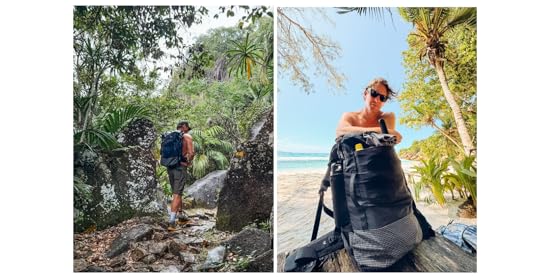
As the Creative Director for an online publisher (Matador Network) for the last 10 years, I’ve been on some wild wild journeys. I don’t want to start this article off by listing them off. However, for the sake of the validity of this review, I do feel like I need to establish the fact that I do get around, quite literally. From chasing humpback whales in Tonga to tagging endangered Eastern Black Rhinos in Kenya to shooting portraits of Dia De Los Muertos in Mexico, I have not had one speciality or style for many of years. I find myself thrown into a myriad of situations that often times could not be any more different than the last place I was shooting.
Need a travel backpack? Check out Matador’s detailed travel backpack reviews: Our favorite carry-on backpacks for your work-from-anywhere lifestyle Tortuga Travel Backpack 40L is the best travel backpack for your money This small backpack is the only travel pack an efficient packer needs The best Patagonia backpacks for travelers These Two Genius Bags Replaced the Four Camera Bags I Used to Carry
Thus enter the problem, my never ending search to find a bag that, for a lack of better descriptions, does it all. One part hiking bag, one part camera bag, one part carry-on travel bag, one part everything else, it simply didn’t exist until I found the Matador Globerider bag. In the four months I have been using this bag it has quickly become my goto piece of equipment when hitting the road or going on another assignment. In short, this bag does it all.
We hope you love the Matador Globerider 45 Travel Bag! Just so you know, Matador may collect a small commission from the links on this page if you decide to make a purchase.
What I love about the Matador Globerider 45 Travel Pack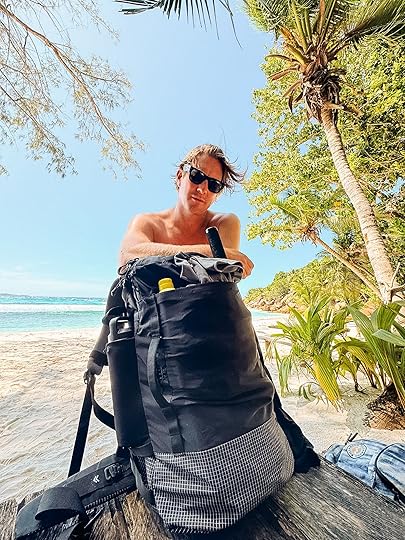 Proud owner of a matador globerider travel pack 45. Photo: Scott Sporleder
Proud owner of a matador globerider travel pack 45. Photo: Scott Sporleder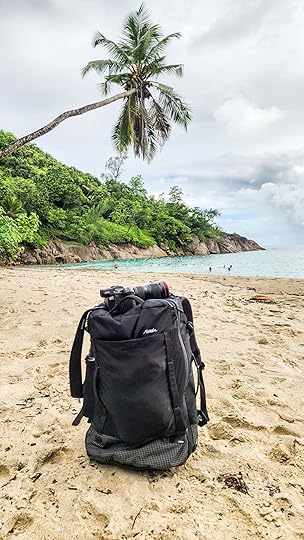 On the beach. Photo: Scott Sporleder
On the beach. Photo: Scott SporlederLet’s talk about the bag itself, the reason why I have been loving this thing and a couple of things I would tweak if there were to be another iteration.
Gotta just get out there and state that the completely open zipper is a game changer. For years, I’ve gone on long hikes/shoot days where I’ve shoved so much into a bag that it shouldn’t be legal. Only to deal with the absolute nightmare of trying to figure out where anything is, as it’s all been jammed down to the base of the bag. Inevitably, I have to remove all the contents of the bag to find the one obscure object I was looking for. Not anymore. I don’t think there’s any feature that I use more on this bag than being able to drop it to the ground, unzip the whole thing and open it like a book just to find exactly what I need.
And because of this, I’ve utilized some small storage kits to throw in there and everything is where it’s supposed to be everytime I open it. I know that mind sound extremely basic, but I can’t tell you enough how much time and headaches it’s saved me on the last few shoots.
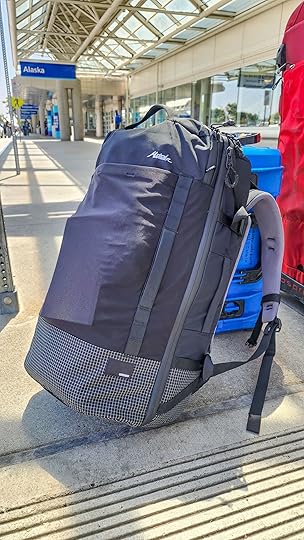
The Globerider about to ride the globe. Photo: Scott Sporleder
There are several other features that sound simple but are so clutch. What’s that? A water bottle pocket that actually fits and holds a water bottle? The very stretchable material used for that pocket makes it super easy to put in or pull out a water bottle but also not be worried about it dropping out everytime I bend over or am on the move. The large outside pocket, too, is a simple and quick solution to stuff jackets, various items on that you need to use readily while on the move.
Another feature that I’ve loved is the ability to tuck the extra hip straps into the back itself. While on longer hikes carrying a heavy bag it can be extremely useful to be able to support the weight of the bag around your waist. However I would say I only utilize this maybe 20 percent of the time, because for the most part all of my travels are spent commuting. Putting the bag into an overhead compartment, pulling it out of the trunk of a car, stacking it on a trolly. That’s when these extra straps can be such a pain in the ass, getting stuck on everything. Love the feature of being able to store these things away and out of sight.
What I would change about the Matador Globerider 45 Travel Pack A good travel pack that's also a good hiking pack. Photo: Scott Sporleder
A good travel pack that's also a good hiking pack. Photo: Scott Sporleder Hiking with the Globerider. Photo: Scott Sporleder
Hiking with the Globerider. Photo: Scott SporlederThere are a couple of features that aren’t horrible but I just can’t quite tell what the reasoning was behind them. First and foremost is the double handle on the top of the bag. There are two separate handles and despite being a larger person with bigger hands, I always feel like I can’t quite grab both of them at the same time in a comfortable manner. So I end up grabbing one and that kicks that bag off in one lopsided direction. It’s not a huge issue, but it is one that I find a bit annoying while on the run.
The other issue I’ve come across is the shoulder straps themselves. I am not sure if it’s just my body (because I have come across this issue on other bags too) but the end of the straps always seem to land right above my collar bones in way that puts a lot of weight in a bit of weak area. Even when I adjust the straps, the weight distribution always finds its way right into that weird spot, right where it seems like the smallest amount of cushion and support on the straps seem to live.
Again, this might be a particular issue for my specific body type but it’s one of the only issues I found with this bag.
Ultimately, The Matador Globerider 45 is a massive win in my book and one that I grateful to have found. In a world of technical over the top bags with what seems like infinite amounts of tiny pockets and redundant straps, the Matador Globerider strikes the perfect balance of utility, durability and style. 10 out of 10 would recommend. 
October 9, 2024
Matador Creators Spotlight: @ChewsToExplore on How to Build a Successful (and Profitable) YouTube Channel

Matador Creators is a place where people who love to travel can come together. It’s a community for talented travel writers, editors, photographers, filmmakers, and influencers. Whether you’re a seasoned pro or just starting, you can find support, inspiration, and opportunities to grow your career. From paid gigs to press trips and tips on tools that can help you in the industry, the platform is a place to connect with other travelers, share your experiences, and learn from others.
Here, we chat with creators Chew and Olivia of the Chews To Explore YouTube channel. The married duo discusses how they grew their channel from scratch and monetized from posting weekly videos.
This interview has been edited for clarity and length.
Matador: How did you start growing your YouTube channel?Initially, we created videos based on our experiences and what we found interesting. We didn’t have a specific strategy. However, after analyzing our analytics and identifying which types of videos performed well, we better understood what our audience found helpful and enjoyable.
Our audience was particularly interested in budget-friendly content that helped them plan their trips. By focusing on providing valuable information tailored to our viewers’ needs rather than centering content around ourselves, our channel started to grow.
Are you in the YouTube partner program?Yes, we are in the YouTube Partner Program. It took us about nine months of posting videos one to two times per week to get monetized. At the time, the requirements were 1,000 subscribers and 4,000 watch hours within the last 12 months. After meeting this criteria, it took us four more months to receive consistent payments from YouTube ads. In addition to ad revenue, we monetize by creating downloadable destination travel guides. These guides are designed to help our audience better navigate their trip planning and are linked in the descriptions of our related YouTube videos.
Do you get approached by travel brands for partnerships?

Yes, we have been fortunate to partner with several companies in the travel industry. Here are a few examples:
Tourism Board of Puerto Rico: For this DMO, we were invited to explore and create two reels showcasing the island’s southern region.
Priceline: We collaborated to create two reels promoting its “25 Days of Deals” to celebrate its 25th anniversary.
Safety Wing: For Safety Wing, we produced a reel highlighting the importance of travel medical insurance.
Viva V Samana by Wyndham: We created reels and a YouTube video sharing our experience staying at this all-inclusive resort.
These partnerships have allowed us to share valuable information and experiences with our audience while collaborating with reputable, budget-friendly travel industry brands that align with our “See the World, Save a Dollar” motto.
What are your best-performing videos, and have you noticed patterns?Our best-performing videos on YouTube are “Know Before You Go” videos for specific destinations and full recap videos that include detailed price breakdowns of every dollar spent on a trip. Both types of videos provide significant value to our audience by offering essential information and practical tips that make trip planning easier and more accessible. We’ve noticed that our viewers appreciate content that helps them prepare for their travels and manage their budgets effectively.
You also have a large presence on Instagram and TikTok. Are you in the creator program on either of those platforms? How does the YouTube creation process compare to TikTok and Instagram?Yes, we are in the Instagram and TikTok creator programs, but we focus most of our energy on YouTube. While short-form content on Instagram and TikTok is quicker to create, we love creating longer videos on YouTube, where we can really go into the details of our travel stories. Moving forward, we plan to be more intentional with our short-form videos to maintain viewer engagement and generate consistent income, similar to what we achieve on YouTube.
Do you have any tips for up-and-coming travel creators?Consistency is key. Don’t start with the sole intention of making money. While there are opportunities to earn, it requires a lot of hard work and dedication. If your main goal isn’t to provide value and help your audience, you might burn out from the effort with little immediate reward. Some creators gain popularity quickly, while others take longer; everyone has their own journey. Make sure you genuinely enjoy creating content and sharing your experiences. Focus on what you love, and the rewards will follow in time.
What are your next goals on social media?Our goal is to reach 100,000 subscribers on YouTube by the end of the year. We want to help as many people as possible: “See the World, Save a Dollar.” In other words, how to have high-value experiences around the world for less cost. 
Matador Network's Blog
- Matador Network's profile
- 6 followers



